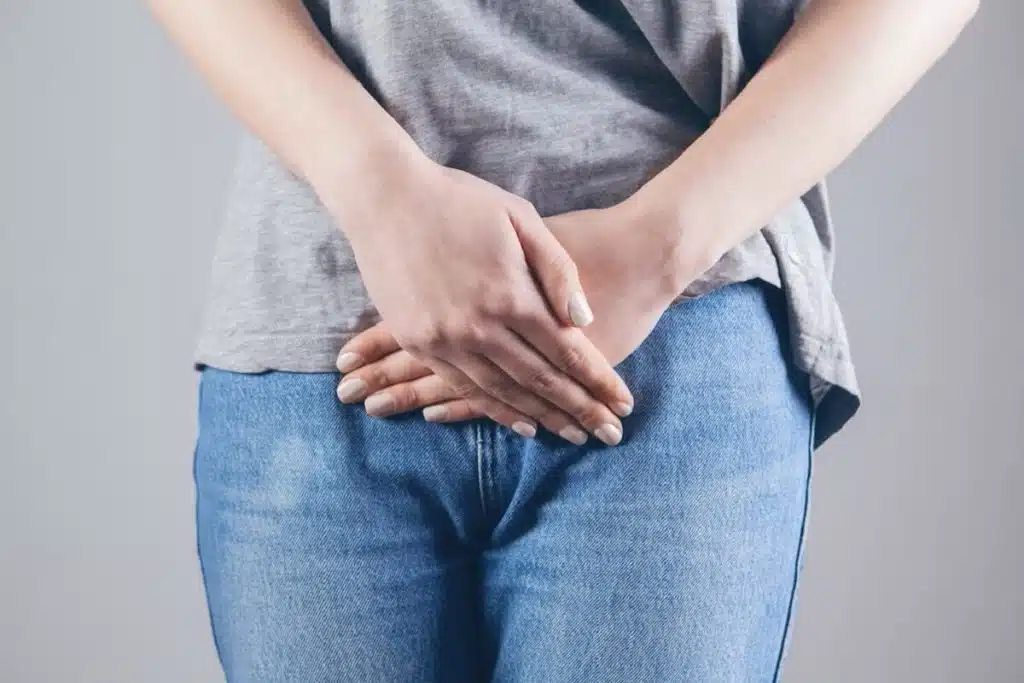Have you ever heard of Bladder Pain Syndrome (BPS) before? This is a painful condition that can be hard to live with, but with proper symptom management and treatment, issues related to the condition can improve.
This guide is here to help you gain a better understanding of what this condition is, and the different ways to treat it, to reduce symptoms. Let’s dive in!
What Is Bladder Pain Syndrome
Bladder pain syndrome, also referred to as painful bladder syndrome or interstitial cystitis, is a condition that leads to chronic pain in the pelvis and/or bladder.
Pelvic pain and bladder pain, in general, can be caused by a wide range of different conditions. Many issues, such as kidney disease, bladder cancer, or a urinary tract infection, can cause some issues with pelvic pain or bladder pain.
Those with bladder pain syndrome have persistent, recurrent, or chronic pelvic pain/bladder pain, accompanied by other symptoms, with no sign of infection or other issues causing the pain. This is a complex condition that affects the pelvic floor muscles, bladder, and a patient’s nervous system.
Bladder Pain Syndrome Causes
There are many people out there dealing with bladder pain symptoms who may not even know they have this condition. It may be shocking to learn that in actuality, nearly 1.2 million Australians are living with BPS. That’s nearly 5% of the population!
Many assume that issues with bladder pain syndrome are based on issues with the bladder itself, including issues with the bladder lining or bladder wall. However, this condition is more related to pelvic floor dysfunction than it is to issues with the bladder.
In many cases, a patient with BPS will struggle with pelvic floor dysfunction, particularly with the pelvic floor muscles being overactive or too tight, causing potential pelvic floor referral pain. The pain in the pelvic floor in turn affects the pelvic organs, which includes the bladder, causing this complex pain syndrome.
Bladder Pain Syndrome Symptoms
What are the symptoms? For those who receive a diagnosis, they will experience some of the more common symptoms, including;
- Pain in the pelvis/pubic bone
- Burning sensation while passing urine
- Increased urinary urgency
- Increased urinary frequency
- Bladder inflammation
- Difficulties controlling urination (overactive bladder)
- Urinary Tract Infection symptoms (Burning sensation, pain, increased urge to go)
- Pain in the hips/lower back
- Constipation
- Painful vaginal intercourse
- Pain worsening with bladder filling
How to Treat Bladder Pain Syndrome
As we touched on above, many people assume bladder issues like this have to do with the bladder, but it has much more to do with the pelvic floor. As a result, the best kind of treatment option out there is one that addresses the pelvic floor.
Pelvic physiotherapy has been proven to alleviate common painful bladder syndrome symptoms. Treatment starts with a physiotherapist doing a full assessment to identify the cause of the pain and the exact source. This will rule out if the symptom you are experiencing is a result of painful bladder syndrome or a different chronic pain condition linked to the bladder or pelvic region.
Once it is determined that a patient has bladder pain syndrome, there are many different treatments that can be explored. These will likely be focused on treating the pelvic floor and pelvic bowl with a combination of physical therapy exercises, technologies that target nerve pain/muscle pain, and massage techniques.
With time, patients can see their symptoms improve, or recover from the condition entirely.
Living with Bladder Pain Syndrome: Things to Avoid
Learning how to live with this condition can be difficult, with many patients doing more harm than good when trying to manage a certain symptom they are experiencing.
The most common issue for those with interstitial cystitis/bladder pain syndrome is pain when the bladder fills. This bladder pain associated with a full bladder can lead some patients to avoid drinking liquids, thinking fewer liquids means less urine, and thus, less pain during bathroom visits.
However, this can often worsen symptoms, leading to dehydration, and in some cases, a urinary tract infection.
Those with urinary bladder pain may also turn to over-the-counter treatment options for pain. However, these medications can work less well over time, and don’t address the root of the issue.
For many patients, this can lead to something we call the cycle of pain. When stuck in this cycle of pain, patients will deal with chronic pain with no seeming end in sight. The pain gets locked into the body, worsening over time, with the body unable to deal with pain signals in a normal way.
With time, this physical pain can lead to huge mental impacts, worsening mood, and leaving patients hopeless. This is why we strongly recommend reaching out for medical help, rather than trying to manage symptoms alone, or relying on temporary fixes to stop the pain.
Bladder pain syndrome is, indeed, painful. But those who are dealing with the condition do not need to manage it alone. There are plenty of treatment options available out there that can take a patient back to living a pain-free life.
Bladder Pain Syndrome Treatment with the Sydney Pelvic Clinic
If you believe you may be suffering from bladder pain syndrome, the team at the Sydney Pelvic Clinic is ready to help! We have a dedicated team of physiotherapists ready to help you address the issues, and find a treatment plan suited to you.

